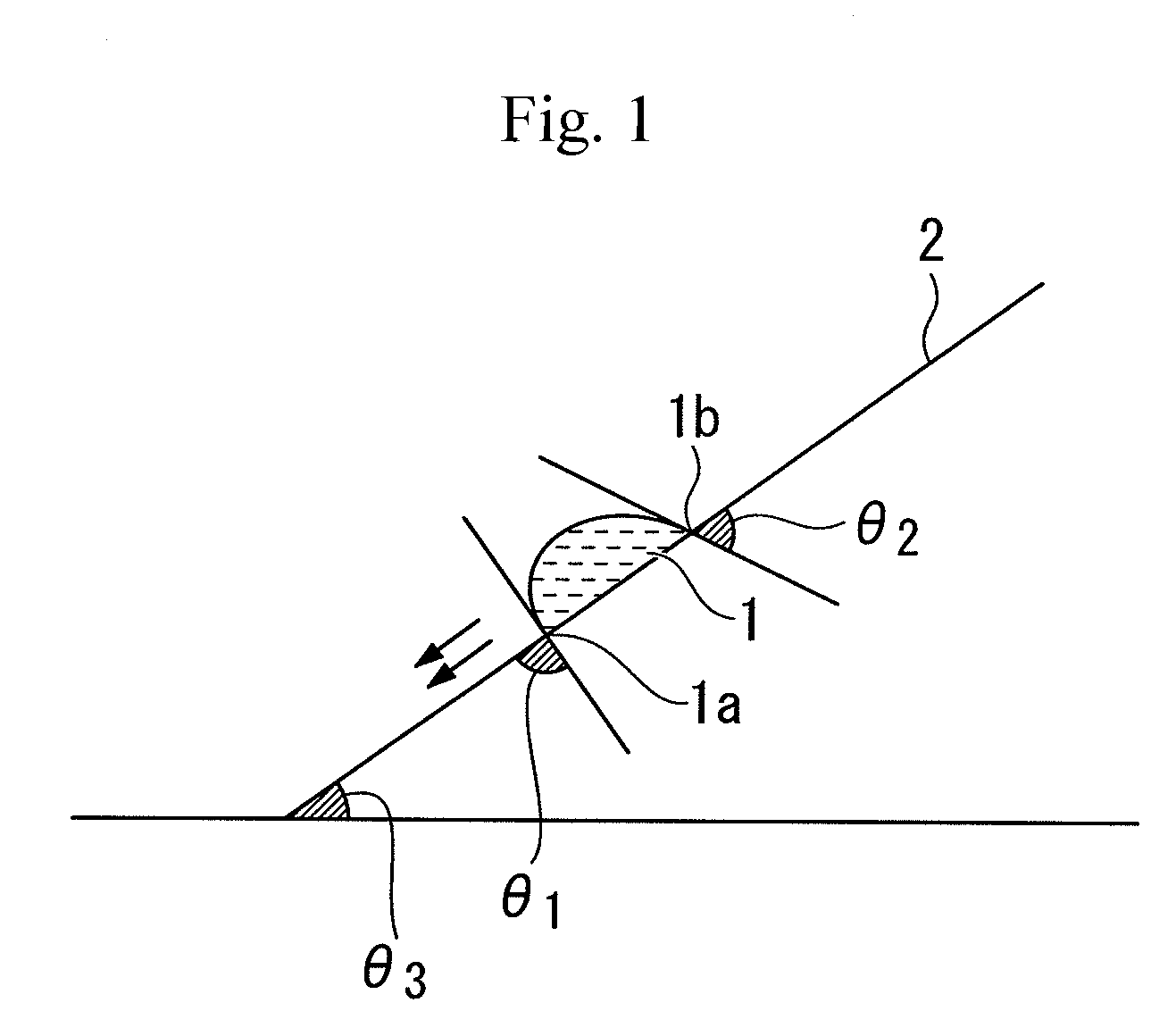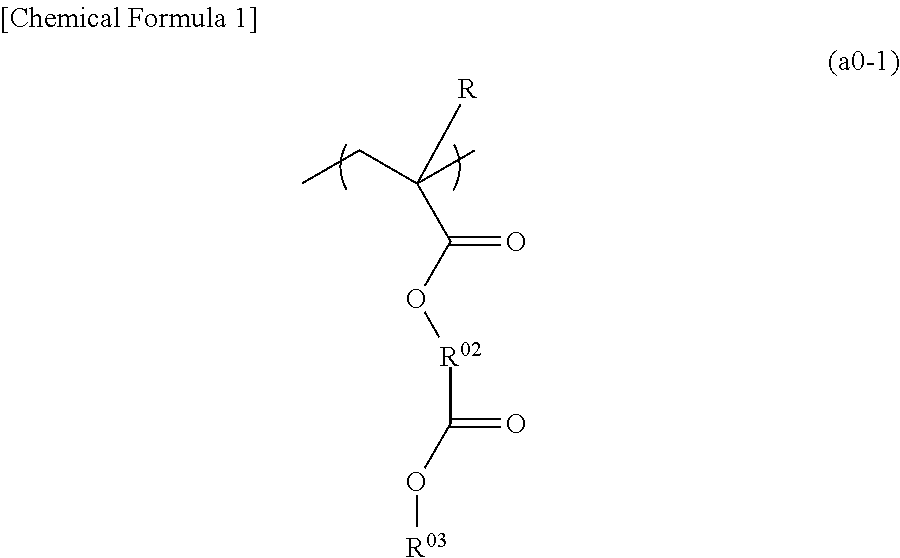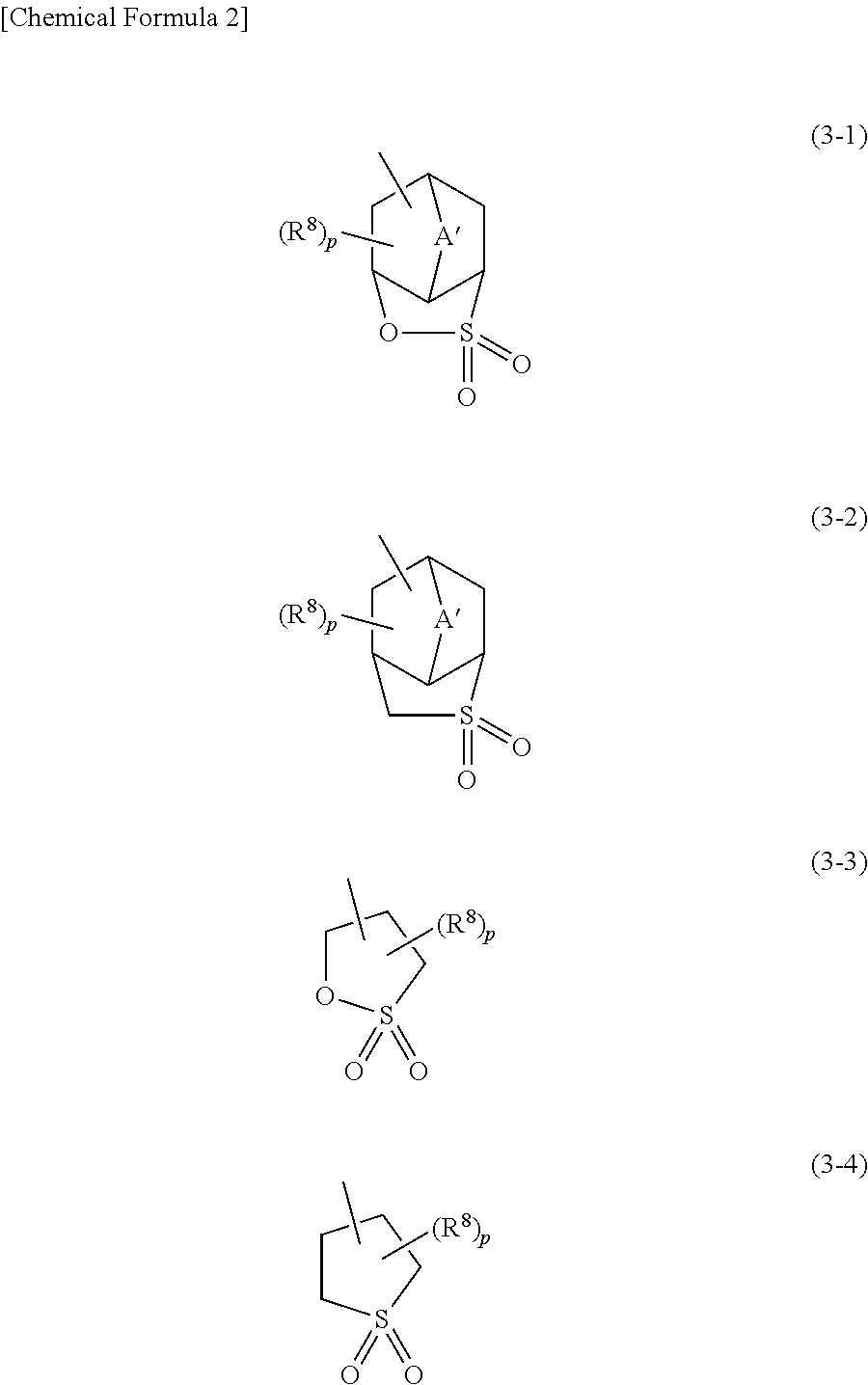Positive resist composition, method of forming resist pattern using the same, and fluorine-containing polymeric compound
- Summary
- Abstract
- Description
- Claims
- Application Information
AI Technical Summary
Benefits of technology
Problems solved by technology
Method used
Image
Examples
synthesis example 1
Synthesis of Fluorine-Containing Compound (1)
[0787](i) Synthesis of compound (1)-2
[0788]61 g (600 mmol) of triethylamine and 64 g (418 mmol) of methyl bromoacetate were added to 300 ml of a THF solution containing 30 g (348 mmol) of methacrylic acid in a nitrogen atmosphere at 0° C., and the temperature was elevated to room temperature, followed by stirring for 3 hours. After conducting thin-layer chromatography (TLC) to confirm that the raw materials had dissipated, the reaction solution was subjected to distillation under reduced pressure to remove the solvent. Then, water was added to the resultant, and extraction was conducted with ethyl acetate three times. The resulting organic phase was washed with water twice, and then subjected to distillation under reduced pressure to remove the solvent, thereby obtaining 47 g of a compound (1)-1 in the form of a colorless liquid (yield: 85%).
[0789]Subsequently, 700 ml of a THE solution containing 30 g (190 mmol) of the compound (1)-1 was ...
synthesis example 2
Synthesis of Fluorine-Containing Compound (2)
[0800]25 g (125 mmol) of a compound (2-1) shown below was added to 200 ml of a THF solution containing 30.1 g (200 mmol) of 2,2,3,3,3-pentafluoropropanol, 47.9 g (250 mmol) of ethyldiisopropylaminocarbodiimide (EDCI) hydrochloride and 1.0 g of dimethylaminopyridine (DMAP) in a nitrogen atmosphere at 0° C., and the temperature was elevated to room temperature, followed by stirring for 3 hours. After conducting thin-layer chromatography (TLC) to confirm that the raw materials had dissipated, the reaction solution was cooled to 0° C., and water was added thereto to stop the reaction. Then, extraction was conducted with ethyl acetate three times, and the obtained organic phase was washed with water twice. Thereafter, the solvent was distilled off under reduced pressure to obtain a crude product, and the obtained crude product was purified by silica gel filtration (using ethyl acetate), thereby obtaining 22 g of a fluorine-containing compound ...
synthesis example 3
Synthesis of Fluorine-Containing Polymeric Compound (1): Synthesis of Block Copolymer
[0803]In a glove box purged with nitrogen, 0.333 g of ethyl-2-methyl-2-butyltellanyl-propionate, 0.205 g of dibutyltellunide, 0.091 g of azobisisobutyronitrile, 9.96 g of the fluorine-containing compound (1) and 12.17 g of 1,4-dioxane were added to a reaction vessel, and a polymerization reaction was performed at 65° C. for 10 hours.
[0804]Subsequently, a mixture containing 10.04 g of a compound (5) shown below, 12.27 g of 1,4-dioxane and 0.023 g of azobisbutyronitrile was dropwise added to the reaction system, and the reaction was continued for 12 hours.
[0805]Thereafter, 22.23 g of 1,4-dioxane was added thereto, and the reaction mixture was heated to 80° C. while stirring. While maintaining the temperature at 80° C., a mixed solution containing 4.02 g of 1,4-dioxane and 2.01 g of a 30% oxygenated water was dropwise added thereto over 1 hour. After the dropwise addition, the resultant was stirred at ...
PUM
 Login to View More
Login to View More Abstract
Description
Claims
Application Information
 Login to View More
Login to View More - R&D
- Intellectual Property
- Life Sciences
- Materials
- Tech Scout
- Unparalleled Data Quality
- Higher Quality Content
- 60% Fewer Hallucinations
Browse by: Latest US Patents, China's latest patents, Technical Efficacy Thesaurus, Application Domain, Technology Topic, Popular Technical Reports.
© 2025 PatSnap. All rights reserved.Legal|Privacy policy|Modern Slavery Act Transparency Statement|Sitemap|About US| Contact US: help@patsnap.com



